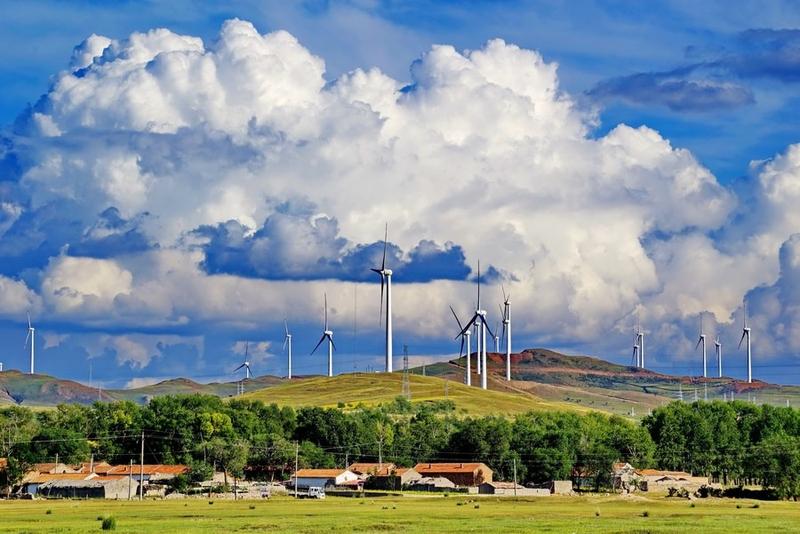 This undated file photo shows a wind power plant in Zhangjiakou, north China's Hebei Province. (PHOTO / XINHUA)
This undated file photo shows a wind power plant in Zhangjiakou, north China's Hebei Province. (PHOTO / XINHUA)
The national-level carbon emission trading system will start by the end of June as scheduled, demonstrating China's resolve to further cut greenhouse gas emissions and realize carbon neutrality.
Two cities have been selected as trading centers for the carbon emission trading, following the call of the National Development and Reform Commission in late 2017.
The Shanghai Environment and Energy Exchange is responsible for building the trading system mission. And the China Hubei Emission Exchange in Wuhan, Hubei province, will be in charge of the registration of applications and data collection.
Upon completion, the national-level carbon emission trading platform will be run by an independent institution. Trials of trading will be first conducted in seven cities and provinces, including Beijing, Shanghai and Guangdong, according to Lai Xiaoming, chairman of the Shanghai Environment and Energy Exchange
As Hubei Daily reported in early March, the first batch of 2,225 companies have registered with the Hubei exchange to apply for carbon emission trading.
Minister of Ecology and Environment Huang Runqiu said in late February that trial runs of the carbon emission trading should be carried out as soon as possible to make sure that the trading system can be launched in late June.
Upon completion, the national-level carbon emission trading platform will be run by an independent institution. Trials of trading will be first conducted in seven cities and provinces, including Beijing, Shanghai and Guangdong, according to Lai Xiaoming, chairman of the Shanghai Environment and Energy Exchange.
About 5 percent of the carbon emission quota of the seven places will be traded when the platform starts trial operations.
ALSO READ: Nation's carbon trading efforts could serve as model
The country's carbon emission trading volume is expected to reach 200 million tons shortly after the platform goes operational, Lai said.
On Jan 5, the Ministry of Ecology and Environment released interim rules for carbon emission trading management, which took effect on Feb 1. It was the first time that the country has rolled out regulations of this kind.
During a visit to the Shanghai Environment and Energy Exchange on Tuesday, Jin Penghui, vice-president of the Shanghai Head Office of the People's Bank of China, the central bank, said that the carbon exchange is an important way to realize carbon neutrality via market mechanisms.
The financial feature of carbon emission products requires coordination of various departments, Jin said.
Li Jun, deputy head of the Shanghai Municipal Financial Regulatory Bureau, suggested that the market mechanism should be optimized steadily, based on trading in the spot market.
The Shanghai Environment and Energy Exchange can work closely with other financial institutions in the city to roll out more standardized and non-standardized derivatives, he said.
Exploration of the application of financial tools and trading of carbon emissions will also help consolidate Shanghai's role as a world financial center, said Zhou Xiaoquan, president of the Shanghai United Assets and Equity Exchange, one of the major shareholders of the Shanghai Environment and Energy Exchange.
Shanghai's regional carbon emissions trading system mainly serves companies located in the city. It started trading in November 2013, which was the first carbon emissions trading system in China.
READ MORE: China's carbon trading pilot boosts emissions control
By the end of February, the aggregated carbon emissions trading volume in the spot market in Shanghai reached 156 million tons, with the total trading value around 1.75 billion yuan (US$270 million).


